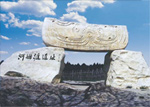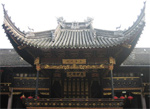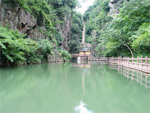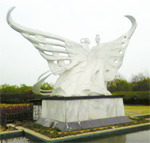Liang-Zhu Cultural Park
As a matter of fact, the love story of Liang and Zhu is not simply a legend, but it had a prototype in history. In the local chronicles, like Chronicles of Ningbo Prefecture and Chronicles of Yinxian County, there are definite accounts about Liang Shanbo. According to the historical records, Liang Shanbo was born in Guiji (today's Shaoxing) in the East Jin Dynasty (317-420 AD). He was once County Governor of Yinxian County. In the book Climates, Geography and Atlas of Siming by When Zhang Jin (a historian in the Song Dynasty), under the entry of Yinxian County, it is noted, The Righteous Woman's Grave, where Liang Shanbo and Zhu Yingtai were buried together, lies behind Jie Dai (meaning "reception") Temple 10 li west of the county, with a temple nearby. Old records indicate that the two used to be classmates for nearly 3 years and Shanbo was too innocent to suspect that Yingtai was in fact a girl. This corresponds with the record in Chronicles of Ten Provinces and Four Ethnic Groups about the righteous woman Zhu Yingtai who shares one grave with Liang Shanbo. This citation not only tells us of the location of the Liang Shanbo Temple, but also quotes the ancient chronicles in the early Tang Dynasty on the Liang-Zhu story. These are the earliest records on the love story of Liang and Zhu in Chinese history. Although there are many other relics which are supposed to be related to the lovers in China, there is only one Liang Shanbo Temple and it is here in Ningbo. After careful field investigations by authoritative experts on folk arts, it has been confirmed that the origin of Liang Zhu love story is the Shanbo Temple in Gaoqiao Town.

 Inquiry Basket (
Inquiry Basket (






